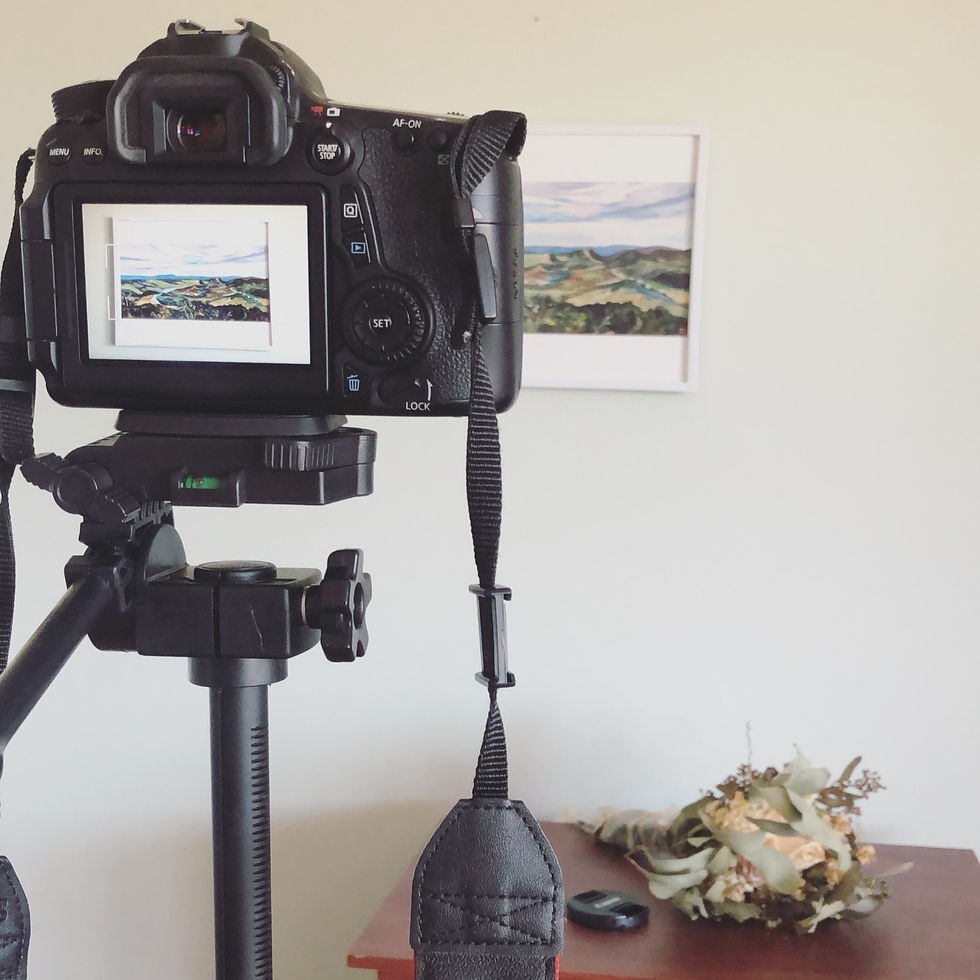How to Price Artwork
- Bethany C. Hartman

- Jul 29, 2019
- 4 min read
Three Suggestions to help you answer the dreaded question..."How much?"

#1 Know Your Audience!
The picture above is from an art fair I attended in 2018. I priced my work by adding up the cost of travel to the fair (gas, food, and lodging), materials (canvas, framing materials, peg-board stand, paint, brushes, ect.), and entrance fee into the fair. From this total, I decided how much I wanted to make profit off the painting ($40-$50/painting or so) after the commissioning charge taken by the event organizer. The price per painting was between $150 and $350. This seems fair right--cover the cost of the materials and take a little bit of cash home?
What I discovered was that my audience was looking for pieces that were between the price of $15-$20 not $150--$350. Therefore, because the price-tags on my paintings far exceeded my audiences expectation, I did not sell any pieces. Know your audience, and their price expectations! With hind sight, I could have brought prints of my original paintings instead of taking all of the original work with me, and my experience with the art fair would have been much more successful.
As a general tip when deciding what type of work to show and how to price your work within a successful range, consider looking up your venue ahead of time. Consider what other artists who have shown work at that venue have charged in the past. Is the space outdoor or indoor? Is the venue a destination viewers are coming with the intent of purchasing original art work, or is the venue an interesting distraction along their journey to another destination? All of these types of questions can help you gauge your audience's price expectations. Once you know the audience's expectation, you can decide whether you can afford to show your original painting, or whether you need to bring your prints with maybe one or two original paintings!
# 2 Standardize your Pricing!
I use to agonize over pricing art work--do I charge based off of my time, do I charge based off emotional connection, what is fair? I knew I did not want to charge for my time because I work on some paintings across the span of three years, and others across the span of two months, and I did not have a great way for me to track my time. Additionally, if I charged even minimal wage of $7.25 per hours, the paintings would far exceed any price my audience would be willing to pay. In the past, I charged based off emotional connection. This means that when asked the question "How Much" I would have to think about how much I loved the painting, and how much money would compensate for the emotional loss of the painting. One painting that was 16 x 20" I might give away, while another painting that was 8 x 10" I might charge $350.00. This method both left the buyer confused at my price range between paintings and left myself tired from having to gauge my swaying emotional connection with the piece.
The best tips I have learned when considering pricing is standardize your pricing! Artist Catherine Freshley's website was really helpful in providing the suggestion of pricing per square inch. Check out her website linked here to view her tips on how to standardize your pricing!
Personally, I am doing a mixture of pricing per square inch and pricing based off emotional connection. What that looks like is on average I try and price about $1.25 per square inch. However on some of my larger paintings, such as ones that are 42 x 42," I'm not comfortable charging the standard of $2205, so I typically lower the prices off of this standard by asking myself how much am I willing to sell the piece for by trying to balance the standard price with effort, time, resources, and skill put into the piece.
# 3 Play with Pricing!
I am 100% not an expert at knowing how to price a piece of artwork. In fact, just this last month, I priced a show with one set of prices, and after I took down the show, I re-evaluated my pricing ranges and adjusted them based off how well they sold/didn't sell. I have had shows where half of my show has sold, and other shows where zero of my paintings have sold. All of that to say, I've found value in playing with pricing. You have to play in order to understand your audience's expectations as well as your own financial needs. Start by adding up your basic material fees, transportation fees, service fees (if applicable), and studio rent (if applicable) and dividing those costs amount the paintings you are producing. Make that sum your base line cost of creating the work. From there, as you are learning to start pricing your work, play around with lowering and raising your prices to help you find the sweet spot of pricing.


Comments